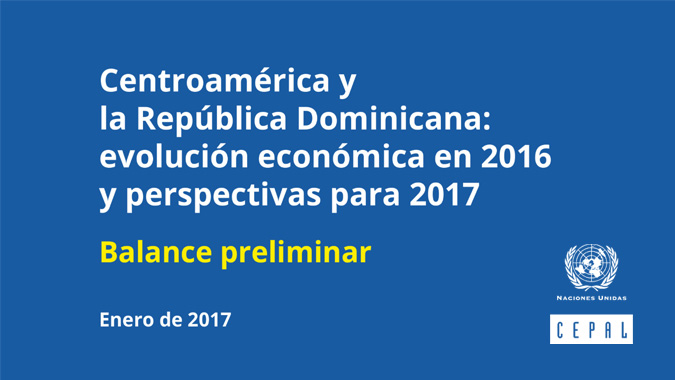GDP of Central America and the Dominican Republic to Grow by an Average of 4.5% in 2017: ECLAC
Work area(s)
The subregion will continue to enjoy the highest growth rate in Latin America and the Caribbean, in spite of uncertain international conditions and a slowdown in private consumption and investment.

The most recent report from the Economic Commission for Latin America and the Caribbean (ECLAC) reveals that in 2017, the countries of Central America and the Dominican Republic (the CARD region) will experience an average growth rate of 4.5% (4.3% if Panama —where economic acceleration is forecast— is excluded). This compares to a figure of 1.3% for Latin America and the Caribbean as a whole.
The report “Central America and the Dominican Republic: Economic evolution in 2016 and perspectives for 2017. A preliminary overview” (Spanish only), prepared by the ECLAC Subregional Headquarters in Mexico, indicates that the economies of the CARD countries continued to perform well in 2016 (4.5%), although that result was lower than the figure of 4.9% recorded the previous year. This was mainly due to less favourable conditions in external demand, caused primarily by slower growth in the United States economy.
For the second consecutive year, dynamism in the subregion was on account of domestic demand (investment and consumption), in contrast to net exports, which had a negative impact. Private consumption was bolstered by lower inflation and higher levels of disposable income, which were in turn the outcome of an average year-on-year decrease in international energy prices, an increase in family remittances, lower interest rates and increases in real earnings.
Falling international oil prices and low interest rates strengthened the macroeconomic position of the CARD countries. Their average annual inflation rate was 2% in 2016, the second lowest figure in the past 25 years, and their current account deficits fell for the second consecutive year, to an average amount equal to 3% of GDP.
Central government fiscal deficits closed 2016 at around 2.5% of GDP, with mixed results among the different countries. As regards employment, the information available at the time of publication indicated that formal jobs were still being created. Real-term minimum wages also rose, as a result of low inflation.
That notwithstanding, the traditional engines of growth in the CARD region will face a short- and medium-term threat from the trade, migration and investment policies of the new administration in the United States which, if implemented, would reduce the dynamism of international trade, foreign direct investment and remittances. At the same time, an uptick in international energy prices and rising interest rates will have a negative impact on consumption and investment.
In light of that situation, ECLAC recommends that the countries bolster Central American integration and market diversification, and that they strengthen their domestic markets through sustained increases in worker productivity and purchasing power and not on the back of temporary circumstances.
Central America and the Dominican Republic: GDP growth rates, 2015 to 2017
(percentages)
|
Country |
2015 |
2016 a/ |
2017 b/ |
|
Costa Rica |
3.7 |
4.1 |
3.9 |
|
El Salvador |
2.5 |
2.2 |
2.2 |
|
Guatemala |
4.1 |
3.3 |
3.3 |
|
Honduras |
3.6 |
3.5 |
3.4 |
|
Nicaragua |
4.9 |
4.8 |
4.7 |
|
Panama |
5.8 |
5.2 |
5.9 |
|
Dominican Republic |
7.0 |
6.4 |
6.2 |
|
CARD average |
4.9 |
4.5 |
4.5 |
|
CARD average (excluding Panama) |
4.8 |
4.4 |
4.3 |
a Figures for 2016 are ECLAC estimates.
b Figures for 2017 are ECLAC forecasts.
Related content
Country(ies)
- Central America
- Mexico